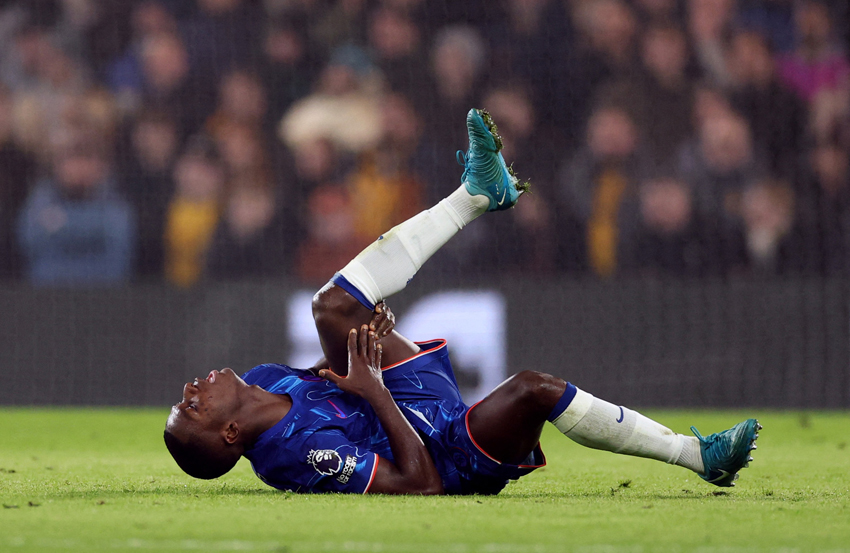Soccer injury-prevention: myths vs. reality

Soccer is the world’s most popular team sport. However, injuries are a major problem for both amateur and professional players alike. Indeed, previous research has estimated that soccer players are among the most injury-prone athletes with an estimated injury rate of 17-24 injuries per 1,000 playing hours(1). Nineteen per cent of all sports injuries that occur in the Netherlands are due to soccer(2) and in the UK alone, the cost of treatment and time lost from work due to soccer-related injuries is estimated to be around £1billion per year(1)!
In a 2011 landmark study, researchers followed fourteen EUFA Champions league teams (ie players from top European clubs) and collected data on 2,229 players over seven seasons to study the injury profile of muscle injuries in players(3). They also examined the players’ training schedules and data from their matches to build a detailed picture of the associated injury risks. The findings were as follows:
· In total, 2,908 muscle injuries were registered.
· On average, each player sustained 0.6 muscle injuries per season (equating to around 15 muscle injuries per season in a squad of 25 players).
· Muscle injuries constituted 31% of all injuries and caused 27% of the total injury absence.
· Ninety-two percent of all muscle injuries affected the four major muscle groups of the lower limbs: hamstrings (37%), adductors (23%), quadriceps (19%), and calf muscles (13%).
· Sixteen percent of the muscle injuries were re-injuries; however, these re-injuries caused significantly longer absences than did the initial injuries.
· The incidence of muscle injury increased with age.
The same team of researchers also carried out a follow-up study in which they sought to establish the effects of fixture congestion on injury rates among the players(4). Exposure and time-loss injuries were registered prospectively from 27 teams over 11 seasons. Matches were grouped according to the number of recovery days before each match, and the injury rates were then compared between groups. The results showed that compared to a recovery period of six or more days, total injury rates and muscle injury rates were increased in league matches where players had had four or less recovery days.
Given the high rates of injury among soccer players (a risk that is increased during periods of match congestion) and the financial pressure of the modern game, it’s perhaps unsurprising that medical staff caring for players find that treatment of injuries in players is a frustrating and a never-ending challenge. It also explains why some players end up returning to competition before the injury has healed completely, setting the stage for injury recurrence, with prolonged absence of the player from competition and training.
Soccer injury treatment
Treating injuries in soccer players is both time consuming and expensive, especially at the elite level. And while there is a sizable body of evidence on the cause of sports injuries, established protocols for treating muscle injuries and when and how to carry out imaging such as X-rays or MRI, and a number of clinical and functional tests that can help determine the optimal point at which an athlete can be safely returned to full participation(5,6), these guidelines have not translated into a significant reduction in muscle injury rates in professional sports such as soccer.
To further complicate matters, a new injury is common within a few weeks after return to competition, and typically costs the player more lost playing time than the primary injury(7). This phenomenon is thought to occur as a result of post-injury muscle tightness and/or weakness, scar tissue formation, biomechanical alterations, neuromuscular inhibition, as well as inadequate treatment – for example, overly aggressive or incomplete rehabilitation(8-10).
Injury-prevention programs
Even armed with the best technology and up-to-date knowledge, treating injuries is fraught with difficulty. Remembering the old adage that ‘an ounce of prevention is worth a pound of cure’, a much better solution is to try to prevent injuries from occurring in the first place with an injury-prevention program. However, this is easier said than done. It’s true that there are many studies investigating methods to prevent muscle injury and injury recurrence – methods including concentric and eccentric exercises, improving flexibility and sport-specific training drills. Despite this and programs such as FIFA’s ‘The 11’ (see box 1), the prevalence of muscle injuries generally, and the recurrence rate in particular, remains stubbornly high(11-16).
Box 1: FIFA’S ‘The 11’ injury-prevention program
In 1994, FIFA, the world soccer governing body, formed an independent research unit called the FIFA Medical and Research Centre (F-MARC). One of F-MARC’s first tasks was to study the incidence and causes of soccer injuries, and develop programs to reduce them.
The result was ‘The 11’ program, whose core is a series of 10 exercises to be used as a warm-up routine for amateur player (the 11th component is the recommendation to ‘play fair’). This program was further developed to become ‘The 11+’, which consists of running and proprioceptive drills, as well as progressions (for more advanced players) to the foundational exercises. This program is now used by professionals and amateurs all around the world(17).
Early research on preventing soccer injuries in male youths over the course of a year suggested that the 11+ program was beneficial in injury prevention(18); after one year, the total number of overall injuries was significantly decreased in the intervention group compared to the controls, with the number of injured players being 20% lower, and the rate of injury 36% less. Even when matched for number of player hours, the intervention group still demonstrated 21% fewer player injuries. Noteworthy however was the fact that the intervention primarily impacted the incidence of mild, overuse, and training injuries. Teams with low-skill players reaped the greatest benefit from the intervention program, leading researchers to conjecture that high-skill players already perform many of these manoeuvres and exercises in their regular training.
Some later research seemed to confirm that at higher levels of performance, ‘The 11+’ program may not produce significant benefits. Researchers in the Netherlands evaluated the program in teams from two high-level amateur soccer competitions(19). Teams were randomly assigned to an intervention (223 players) or control group (also 233 players). The intervention group was instructed to perform ‘The11+’ (focusing on core stability, eccentric training of thigh muscles, proprioceptive training, dynamic stabilisation and plyometrics with straight leg alignment) in each practice session during one soccer season while the participants of the control group continued their practice sessions as usual.
In total, 427 injuries were recorded, affecting 274 (60.1%) of 456 players. However, contrary to the researchers’ expectations, injury incidences were almost identical between the two study groups: 9.6 per 1000 sports hours for the intervention group and 9.7 for the control group. Moreover, there were no differences in injury severity. In fact, the only significant difference was that players in the intervention group sustained significantly less knee injuries (an observation that fits with later findings suggesting that the FIFA 11 program may specifically help reduce the incidence of anterior cruciate ligament injuries of the knee(20)).
In a follow up to the study described above(19), the same group of researchers looked to see whether an injury prevention program consisting of 10 exercises designed to improve stability, muscle strength, co-ordination, and flexibility of the trunk, hip and leg muscles was effective in terms of reducing injury rates and whether it offered any benefits in terms of reducing the associated costs of subsequent treatment for injuries that did occur(21). In this study, 479 adult male amateur soccer players aged 18-40 years were split into two groups: the intervention group was instructed to perform exercises focusing on core stability, eccentric training of thigh muscles, proprioceptive training, dynamic stabilisation, and plyometrics with straight leg alignment at each training session (2-3 sessions per week) during one season. The control group meanwhile continued their usual warm-up.
As in their previous study, there were no significant differences in the proportion of injured players and overall injury rates between the two groups. What was interesting however was that in the intervention group, the average cost of injury treatment was €256 per injured player. In the control group however, average treatment costs were over double at €606 per injured player. The researchers commented that the cost savings in the intervention group might be the result of a somewhat lower rate of knee injuries, which often have substantial costs due to lengthier rehabilitation period and more time lost at work than many other injuries.
Meanwhile, another study on an injury-prevention program (based on The FIFA 11) in male amateur soccer players found that (like the previous studies), an intervention program didn’t necessarily reduce the incidence of injury across the course of a season(22). However, like the above study, the players in the intervention group did incur slightly less indirect healthcare costs, although an explanation for this finding was not given. As if to confirm the confusion surrounding the value of lower-body injury-prevention program for soccer players, a systematic review (a study that provides more robust evidence by pooling data from a number of previous studies) published around that time struggled to reach a definitive conclusion(23).
Six studies involving a total of 6,099 participants met the inclusion criteria and the results of these were contradictory: only two of the six studies (one of high and one of moderate quality) reported a statistically significant reduction in actual injury rates. However, four of the six studies described an ‘overall preventive effect’, although the effect of one study was not statistically significant. Possible reasons for these contradictory findings could be subject selection (gender and level of ability), differences between the intervention programs implemented (content, training frequency and duration) and compliance with the program.
You need to be logged in to continue reading.
Please register for limited access or take a 30-day risk-free trial of Sports Performance Bulletin to experience the full benefits of a subscription. TAKE A RISK-FREE TRIAL
TAKE A RISK-FREE TRIAL
Newsletter Sign Up
Testimonials
Dr. Alexandra Fandetti-Robin, Back & Body Chiropractic
Elspeth Cowell MSCh DpodM SRCh HCPC reg
William Hunter, Nuffield Health
Newsletter Sign Up
Coaches Testimonials
Dr. Alexandra Fandetti-Robin, Back & Body Chiropractic
Elspeth Cowell MSCh DpodM SRCh HCPC reg
William Hunter, Nuffield Health
Keep up with latest sports science research and apply it to maximize performance
Today you have the chance to join a group of athletes, and sports coaches/trainers who all have something special in common...
They use the latest research to improve performance for themselves and their clients - both athletes and sports teams - with help from global specialists in the fields of sports science, sports medicine and sports psychology.
They do this by reading Sports Performance Bulletin, an easy-to-digest but serious-minded journal dedicated to high performance sports. SPB offers a wealth of information and insight into the latest research, in an easily-accessible and understood format, along with a wealth of practical recommendations.
*includes 3 coaching manuals
Get Inspired
All the latest techniques and approaches
Sports Performance Bulletin helps dedicated endurance athletes improve their performance. Sense-checking the latest sports science research, and sourcing evidence and case studies to support findings, Sports Performance Bulletin turns proven insights into easily digestible practical advice. Supporting athletes, coaches and professionals who wish to ensure their guidance and programmes are kept right up to date and based on credible science.









